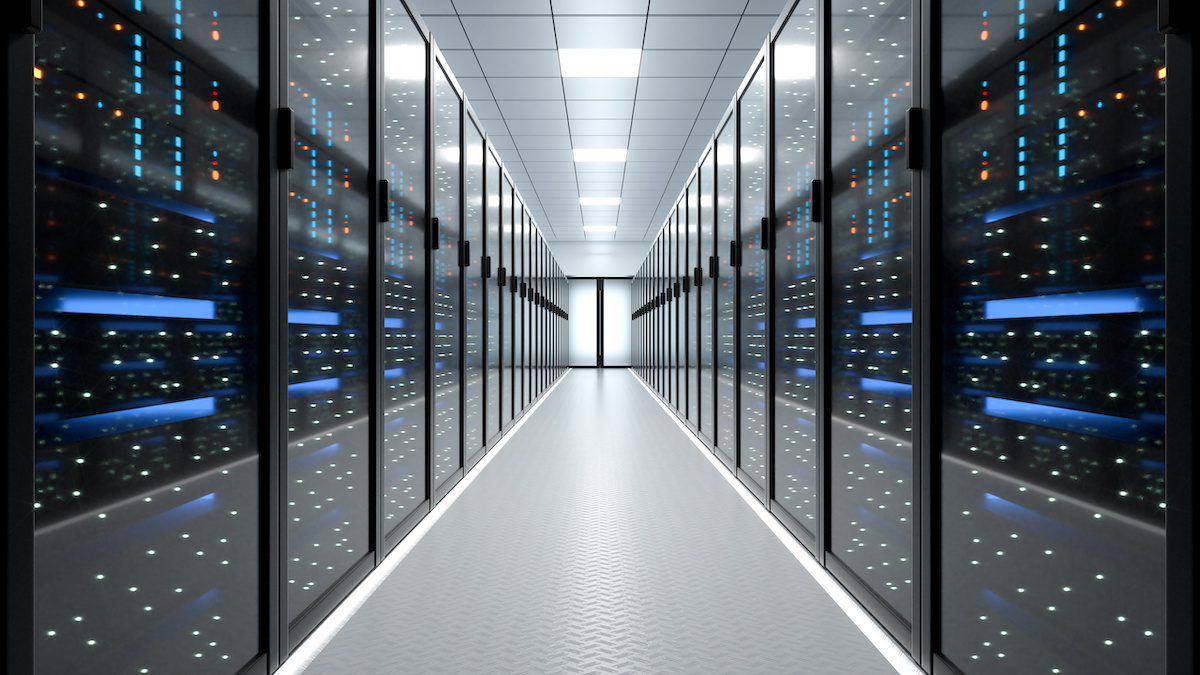Top Data Center Trends and Predictions to Watch for in 202132 min read

Opinions below have been contributed by Bill Kleyman (Switch), Bob Bolz (Aquila, Inc.), Lars Strong (Upsite Technologies), and Mark Acton (Independent Consultant/EkkoSense).
Introduction written by Bill Kleyman.
We learned a lot from 2020. Much of it was an eye-opening experience for many organizations embracing a rapidly changing, digital world. Outside of the many pandemic-fatigue predictions out there, leaders in the data center and technology space quickly saw what works and what doesn’t to support a largely distributed business and end-user workforce. A lot of that learning was trial and error. Some lessons learned were also an illustration of the digital-preparedness of some organizations.
In 2021, here’s what we can expect:
The maturity and use-case definition of the edge. In the latest AFCOM State of the Data Center report, we saw that more than half of all respondents will be deploying some type of edge solution over the next three years. This is great news for leaders in the industry actively working to bridge the communication gap and deliver high-bandwidth services and solutions to more people. Another piece of good news is the maturity around the edge market. In 2021, expect people to have a better idea around use-cases, how the edge will be deployed, and how it can be managed. There are such things as connectivity deserts, with edge and 5G, we’re aiming to reduce these connection dry spots and give more people better access to rich content and services.
Remote/edge site management for both facilities and ICT infrastructure will become an increasing expectation and necessity. Similar to the point above, this is being driven by greater edge deployment requiring the need for remote management of ‘dark’ sites but is also a response to the lessons from the COVID-19 restrictions of travel, which have highlighted both the need and benefit of remote management capabilities. This is in turn has led to a resurgence of interest in genuine DCIM solutions.
5G is on its way (and will offer improved mobile network access), but the infrastructure roll out will be slow and services may be very limited in 2021, despite the hype. The immediate impact will be very limited or even unnoticed this year. The investment and infrastructure required for significant coverage beyond major metropolitan areas is greater than many appreciate and will hold back deployment.
The amount of personal data becoming available and the increasingly sophisticated analytical techniques being applied to multiple data sets will surge. This means that the information as a whole that is increasingly available is far greater than the sum of its disparate parts. This will be become increasingly apparent during 2021 with resulting social and legal challenges around privacy and information rights as governments and legislation struggle, and broadly fail, to keep pace with technological advances.
Globally, governments will attempt to address the issues created by technology developments in AI and ML. In relation to the point above, this will be alongside the increasing amounts of personally identifiable data available, without stifling the benefits that these technologies can bring. A very difficult path to tread.
More autonomous systems, robotics, and advanced automation. You will see more organizations remove manual processes and adopt greater levels of automation. This will impact cloud computing, distributed systems, edge computing, and other systems supporting a digital economy. Here’s another key point: autonomous systems are not here to necessarily replace people. Rather, many of these solutions are being deployed with the specific goal of augmenting human capabilities. In 2021 and beyond, autonomous systems will be designed as human-centric solutions to improve business operations and overall productivity. With the further rise of edge and distributed systems.
The era of ‘zero trust.’ Developed in 2010 by John Kindervag, who at the time was a principal analyst at Forrester Research, zero trust technologies are actively moving into the mainstream. Without a doubt, digital infrastructure security will need to be redefined in 2021 and beyond. This includes both physical security, as well as logical security where we ensure the integrity of data, applications, and services. The model behind zero trust is centered on the idea that organizations should not automatically trust anything inside or outside its perimeters. Instead, the model instructs security, data center, and network professionals to verify anything and everything trying to connect to its systems before granting access. In 2021 and in the near future, leaders in the digital space will need to have a real introspective moment to really understand if their security standards are up to par. As our digital infrastructures become more critical, they will also become a greater target.
Advancements in green energy and efficiency solutions. It’s an exciting time in the energy, battery, and renewable energy space. One of the main goals of many leaders in the technology space is to become greener and more efficient. A major aspect here is that going green is not only good for the environment, but it’s also great for business. You will see new battery developments that come backed with industry funding and early adopters, you’ll experience more diverse sources of renewable energy, and you’ll definitely see more organizations working harder to go green.
Microgrid based data centers will begin to proliferate across both edge and core data center builds. In relation to the point above, microgrids will pop up more often to ensure greater levels of power security and in some cases, reduce the reliance on an aging power grid. Solar power and wind power for battery energy storage and data center energy needs may become the preferred way of building new data centers as we work towards near zero carbon impact designs. US Government will be supporting this as climate issues are rapidly being addressed by the new administration.
Climate change is having an increasing impact on data center design and management. Many organizations, large and small, are making the connection between airflow management, cooling optimization, and the myriad benefits of an efficient site. In November of 2020 the Uptime Institute published an updated survey titled “The gathering storm: Climate change and data center resiliency”. In the study, responses from 2018 were compared to 2019. The data point that stands out is that in 2018, 45% of data center managers surveyed said they were not adapting to climate change because they recently reviewed their plans and were confident that they were prepared. In 2019 the number of data center managers that felt they were prepared dropped in half to only 22%. A critical element of preparing for climate change is to optimize cooling so that free cooling hours can be maximized, water consumption can be minimized, and cooling capacity can be maximized.
An increased focus on the energy efficiency implications of software and ICT Infrastructure rather than the data center as a building. We have become fixated on the data center as a building. The issue is that a data center building does not consume energy. Rather the ICT load within it does. The building merely imposes an overhead on delivery. The techniques and technologies capable of reducing this overhead are measured in PUE values. These are well understood, although admittedly yet to be deployed everywhere. The real challenge though lies in the ICT infrastructure and applications that we choose to deploy and use. There seems to be very little focus on energy consumption in these areas unless it is on a mobile device with limited battery life. At the moment we are effectively saying that our house is a horribly inefficient energy consumer because somebody is leaving a hot shower running 24 hours per day. During 2021, there will be an increasing realization that questioning the decision and value of keeping the shower on are more appropriate than focusing on how the house insulation is performing.
Liquid cooling will continue to be more prevalent in order to cool the hottest CPUs and GPUs. This will be for CPUs approaching 300 watts and GPUs well above 350 watts to increase overall performance (less throttling) and lower failure rates, as AI and ML applications continue their growth curve. Climate initiatives may spawn more data centers to move away from forced air cooling for the CPU and GPU server systems in order to save 50% on electrical usage. However, while liquid cooling of all types will continue to be promoted heavily and gain niche appeal, it will continue to be far from mainstream deployment in the short term, likely not during 2021.
Airflow management is more often being considered in the design of new construction and major retrofits. Historically, the design of data center cooling has often been to match the rated cooling capacity with the design heat load and worry about airflow management later. Although the trend of considering containment in the design phase started years ago, what is new, and increasing, are designs that require full containment on day one, even when a small percentage of the cabinets will be in place. Several large data center providers are asking for designs that incorporate cabinet sized panels that fill in the spaces for future cabinets. This design requirement is being applied to both hot and cold aisle configurations. The benefits of these designs are that full containment allows for the cooling to be optimized from day one, even with a relatively light heat load, keeping operating costs as low as possible.
Staffing challenges are increasingly affecting monitoring and cooling optimization. Even before COVID-19 caused organizations to reduce on site staffing, monitoring of IT equipment intake air temperatures has been suffering. Nearly every computer room I visit has some isolated to wide spread areas of excessively high and low intake air temperatures. Although the IT equipment will alarm if it gets too hot, areas of elevated intake temperatures below the alarm threshold reduce the ability to optimize the cooling. This results in excessively low supply air temperatures and increased operating costs. My guess is that COVID-19 has caused site PUE improvements to flat line, if not worsen. Fortunately, advances in monitoring technology and AI software designed to provide optimization advice are helping to reverse this troubling trend. We are seeing a trend of broader adoption to technologies that support reduced staffing and lights out computer rooms.
A larger focus on talent. During the previous Infrastructure Masons Advisory Council meeting, almost every leader in the industry indicated that talent continues to be a challenge. Only recently, colleges and universities have pivoted to create an actual focus on digital infrastructure. You will see more Millennial leaders and even new Gen Z employees impacting the future data center. As part of the iMasons organization, there are now direct outreach programs to universities to ensure their educational curriculum includes data center and digital infrastructure concepts. It’ll be important for leaders in the data center and technology space to understand both Millennial and GenZ value systems. These generations are different and need to be managed differently as well.
Data centers will continue to be seen as a top performing investment asset class by both individual and corporate investors. This has significantly picked up during 2020 due to the diminishing interest in other property asset classes during the COVID-19 pandemic and increasing uncertainty over the performance of retail and offices assets. This trend will continue to accelerate during 2021.
Technology companies, not only data centers, will move to more economical areas. In relation to the point above, this migration will see large companies move away from areas such as Silicon Valley. Reference recent moves by HPE, Telsa, Amazon, Microsoft and others. This also applies to the entertainment industry (Netflix, NBC Univeral, Amazon), as virtual studio initiatives and COVID-19 are driving this paradigm shift.
The boom in African data center development that began to take off in 2020 will continue to grow and accelerate in 2021. Africa’s data center market is set to grow at a CAGR of over 12% between 2019 and 2025. Steadily growing to accommodate the expanding infrastructure and digital needs of over 1 billion people across the continent. This is highlighted by the significant investment in new cable projects on the West Coast of Africa including the Google subsea cable connecting Lisbon in Portugal and Cape Town in South Africa (Equiano), as well as very significant new data center development projects across the region.
We learned a lot from 2020. Much of it was an eye-opening experience for many organizations embracing a rapidly changing, digital world. Outside of the many pandemic-fatigue predictions out there, leaders in the data center and technology space quickly saw what works and what doesn’t to support a largely distributed business and end-user workforce. A lot of that learning was trial and error. Some lessons learned were also an illustration of the digital-preparedness of some organizations.
In 2021, here’s what we can expect:
The maturity and use-case definition of the edge. In the latest AFCOM State of the Data Center report, we saw that more than half of all respondents will be deploying some type of edge solution over the next three years. This is great news for leaders in the industry actively working to bridge the communication gap and deliver high-bandwidth services and solutions to more people. Another piece of good news is the maturity around the edge market. In 2021, expect people to have a better idea around use-cases, how the edge will be deployed, and how it can be managed. There are such things as connectivity deserts, with edge and 5G, we’re aiming to reduce these connection dry spots and give more people better access to rich content and services.
Remote/edge site management for both facilities and ICT infrastructure will become an increasing expectation and necessity. Similar to the point above, this is being driven by greater edge deployment requiring the need for remote management of ‘dark’ sites but is also a response to the lessons from the COVID-19 restrictions of travel, which have highlighted both the need and benefit of remote management capabilities. This is in turn has led to a resurgence of interest in genuine DCIM solutions.
5G is on its way (and will offer improved mobile network access), but the infrastructure roll out will be slow and services may be very limited in 2021, despite the hype. The immediate impact will be very limited or even unnoticed this year. The investment and infrastructure required for significant coverage beyond major metropolitan areas is greater than many appreciate and will hold back deployment.
The amount of personal data becoming available and the increasingly sophisticated analytical techniques being applied to multiple data sets will surge. This means that the information as a whole that is increasingly available is far greater than the sum of its disparate parts. This will be become increasingly apparent during 2021 with resulting social and legal challenges around privacy and information rights as governments and legislation struggle, and broadly fail, to keep pace with technological advances.
Globally, governments will attempt to address the issues created by technology developments in AI and ML. In relation to the point above, this will be alongside the increasing amounts of personally identifiable data available, without stifling the benefits that these technologies can bring. A very difficult path to tread.
More autonomous systems, robotics, and advanced automation. You will see more organizations remove manual processes and adopt greater levels of automation. This will impact cloud computing, distributed systems, edge computing, and other systems supporting a digital economy. Here’s another key point: autonomous systems are not here to necessarily replace people. Rather, many of these solutions are being deployed with the specific goal of augmenting human capabilities. In 2021 and beyond, autonomous systems will be designed as human-centric solutions to improve business operations and overall productivity. With the further rise of edge and distributed systems.
The era of ‘zero trust.’ Developed in 2010 by John Kindervag, who at the time was a principal analyst at Forrester Research, zero trust technologies are actively moving into the mainstream. Without a doubt, digital infrastructure security will need to be redefined in 2021 and beyond. This includes both physical security, as well as logical security where we ensure the integrity of data, applications, and services. The model behind zero trust is centered on the idea that organizations should not automatically trust anything inside or outside its perimeters. Instead, the model instructs security, data center, and network professionals to verify anything and everything trying to connect to its systems before granting access. In 2021 and in the near future, leaders in the digital space will need to have a real introspective moment to really understand if their security standards are up to par. As our digital infrastructures become more critical, they will also become a greater target.
Advancements in green energy and efficiency solutions. It’s an exciting time in the energy, battery, and renewable energy space. One of the main goals of many leaders in the technology space is to become greener and more efficient. A major aspect here is that going green is not only good for the environment, but it’s also great for business. You will see new battery developments that come backed with industry funding and early adopters, you’ll experience more diverse sources of renewable energy, and you’ll definitely see more organizations working harder to go green.
Microgrid based data centers will begin to proliferate across both edge and core data center builds. In relation to the point above, microgrids will pop up more often to ensure greater levels of power security and in some cases, reduce the reliance on an aging power grid. Solar power and wind power for battery energy storage and data center energy needs may become the preferred way of building new data centers as we work towards near zero carbon impact designs. US Government will be supporting this as climate issues are rapidly being addressed by the new administration.
Climate change is having an increasing impact on data center design and management. Many organizations, large and small, are making the connection between airflow management, cooling optimization, and the myriad benefits of an efficient site. In November of 2020 the Uptime Institute published an updated survey titled “The gathering storm: Climate change and data center resiliency”. In the study, responses from 2018 were compared to 2019. The data point that stands out is that in 2018, 45% of data center managers surveyed said they were not adapting to climate change because they recently reviewed their plans and were confident that they were prepared. In 2019 the number of data center managers that felt they were prepared dropped in half to only 22%. A critical element of preparing for climate change is to optimize cooling so that free cooling hours can be maximized, water consumption can be minimized, and cooling capacity can be maximized.
An increased focus on the energy efficiency implications of software and ICT Infrastructure rather than the data center as a building. We have become fixated on the data center as a building. The issue is that a data center building does not consume energy. Rather the ICT load within it does. The building merely imposes an overhead on delivery. The techniques and technologies capable of reducing this overhead are measured in PUE values. These are well understood, although admittedly yet to be deployed everywhere. The real challenge though lies in the ICT infrastructure and applications that we choose to deploy and use. There seems to be very little focus on energy consumption in these areas unless it is on a mobile device with limited battery life. At the moment we are effectively saying that our house is a horribly inefficient energy consumer because somebody is leaving a hot shower running 24 hours per day. During 2021, there will be an increasing realization that questioning the decision and value of keeping the shower on are more appropriate than focusing on how the house insulation is performing.
Liquid cooling will continue to be more prevalent in order to cool the hottest CPUs and GPUs. This will be for CPUs approaching 300 watts and GPUs well above 350 watts to increase overall performance (less throttling) and lower failure rates, as AI and ML applications continue their growth curve. Climate initiatives may spawn more data centers to move away from forced air cooling for the CPU and GPU server systems in order to save 50% on electrical usage. However, while liquid cooling of all types will continue to be promoted heavily and gain niche appeal, it will continue to be far from mainstream deployment in the short term, likely not during 2021.
Airflow management is more often being considered in the design of new construction and major retrofits. Historically, the design of data center cooling has often been to match the rated cooling capacity with the design heat load and worry about airflow management later. Although the trend of considering containment in the design phase started years ago, what is new, and increasing, are designs that require full containment on day one, even when a small percentage of the cabinets will be in place. Several large data center providers are asking for designs that incorporate cabinet sized panels that fill in the spaces for future cabinets. This design requirement is being applied to both hot and cold aisle configurations. The benefits of these designs are that full containment allows for the cooling to be optimized from day one, even with a relatively light heat load, keeping operating costs as low as possible.
Staffing challenges are increasingly affecting monitoring and cooling optimization. Even before COVID-19 caused organizations to reduce on site staffing, monitoring of IT equipment intake air temperatures has been suffering. Nearly every computer room I visit has some isolated to wide spread areas of excessively high and low intake air temperatures. Although the IT equipment will alarm if it gets too hot, areas of elevated intake temperatures below the alarm threshold reduce the ability to optimize the cooling. This results in excessively low supply air temperatures and increased operating costs. My guess is that COVID-19 has caused site PUE improvements to flat line, if not worsen. Fortunately, advances in monitoring technology and AI software designed to provide optimization advice are helping to reverse this troubling trend. We are seeing a trend of broader adoption to technologies that support reduced staffing and lights out computer rooms.
A larger focus on talent. During the previous Infrastructure Masons Advisory Council meeting, almost every leader in the industry indicated that talent continues to be a challenge. Only recently, colleges and universities have pivoted to create an actual focus on digital infrastructure. You will see more Millennial leaders and even new Gen Z employees impacting the future data center. As part of the iMasons organization, there are now direct outreach programs to universities to ensure their educational curriculum includes data center and digital infrastructure concepts. It’ll be important for leaders in the data center and technology space to understand both Millennial and GenZ value systems. These generations are different and need to be managed differently as well.
Data centers will continue to be seen as a top performing investment asset class by both individual and corporate investors. This has significantly picked up during 2020 due to the diminishing interest in other property asset classes during the COVID-19 pandemic and increasing uncertainty over the performance of retail and offices assets. This trend will continue to accelerate during 2021.
Technology companies, not only data centers, will move to more economical areas. In relation to the point above, this migration will see large companies move away from areas such as Silicon Valley. Reference recent moves by HPE, Telsa, Amazon, Microsoft and others. This also applies to the entertainment industry (Netflix, NBC Univeral, Amazon), as virtual studio initiatives and COVID-19 are driving this paradigm shift.
- The boom in African data center development that began to take off in 2020 will continue to grow and accelerate in 2021. Africa’s data center market is set to grow at a CAGR of over 12% between 2019 and 2025. Steadily growing to accommodate the expanding infrastructure and digital needs of over 1 billion people across the continent. This is highlighted by the significant investment in new cable projects on the West Coast of Africa including the Google subsea cable connecting Lisbon in Portugal and Cape Town in South Africa (Equiano), as well as very significant new data center development projects across the region.
Authors:

Bill Kleyman
Executive Vice President of Digital Solutions, Switch

Bob Bolz
HPC and Data Center Business Development, Aquila, Inc.

Lars Strong
P.E., Senior Engineer and Company Science Officer, Upsite Technologies

Mark Acton
Independent Consultant, Non Executive Director, EkkoSense
Real-time monitoring, data-driven optimization.
Immersive software, innovative sensors and expert thermal services to monitor,
manage, and maximize the power and cooling infrastructure for critical
data center environments.
Real-time monitoring, data-driven optimization.
Immersive software, innovative sensors and expert thermal services to monitor, manage, and maximize the power and cooling infrastructure for critical data center environments.
It’s incredible to read this information, Bill! With the growing need for IT and IT-related services, the demand for data centers is likely to skyrocket. Green technologies to lower carbon footprint, advanced automation, intelligent monitoring devices, smart buildings, improved airflow management, and other trends will be prioritized in the future. The goal is to build more sustainable facilities to fulfill future technological needs.